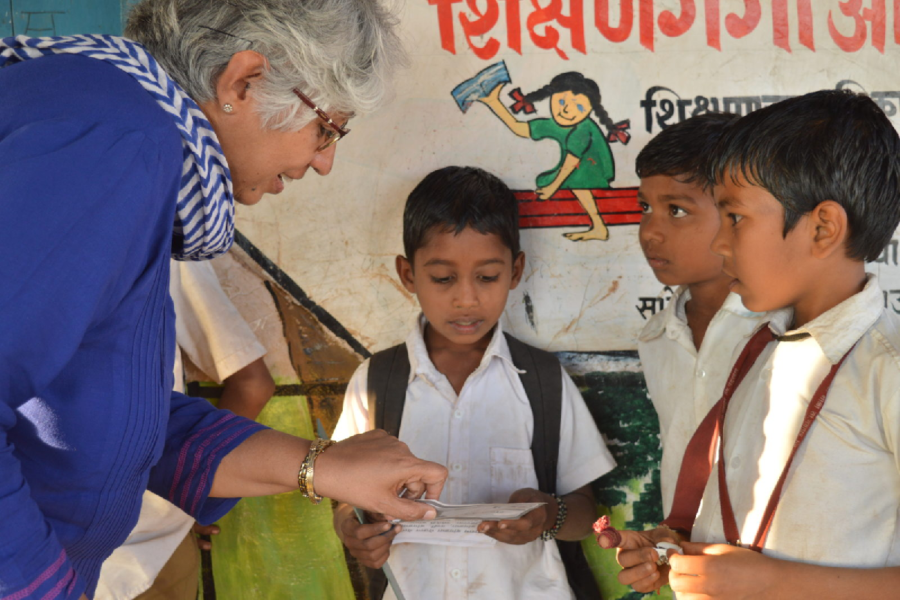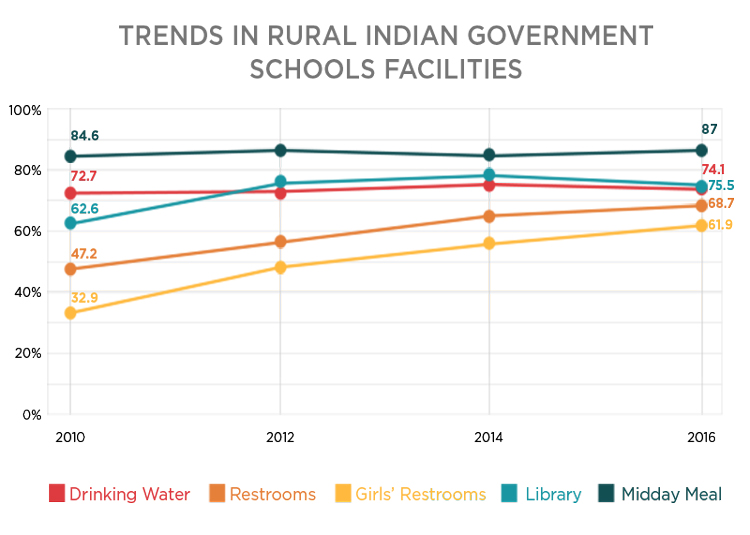ASER 2016: India Must Focus on Building Foundational Skills

Following a one-year hiatus, Pratham released the 11th Annual Status of Education Report (ASER) on January 18, 2017, in New Delhi, India. The comprehensive report details India’s progress on school enrollment and facilities and also examines the status of children’s learning in rural communities, where most of the nation’s poor reside.
The largest household survey in the world, ASER 2016 was conducted in 17,473 Indian villages and sampled 562,305 children ages 3-16. With the assistance of 25,000 volunteers, 15,630 government schools were visited and 400,000 children between the ages of 6 and 14 were assessed. The progress report provides essential data on multiple aspects of schooling and learning to local and state governments, helping officials develop education policies and determine the allocation of funds.
According to the 2016 report, the national picture on school enrollment and facilities continues to improve and children’s learning outcomes show modest gains.
The enrollment percentage for children 6 to 14 edged up slightly from 96.7% in 2014 to 96.9% in 2016 and enrollment for both boys and girls in the 15 to 16 year age group rose more than a percentage point to 84.7% during that same period. However, school attendance remains inconsistent and has actually declined for both primary and upper primary school since 2009.
There has been significant progress in the availability of useable restroom facilities, clean drinking water and school lunch as shown by the chart below.

Although ASER 2016 showed incremental improvement in basic reading and math competencies, the national picture remains bleak.
Overall, the percentage of third-graders who could read first-grade texts increased from 40.2% in 2014 to 42.5% in 2016. This improvement can be attributed to substantial gains in government schools in several states including Punjab, Uttarakhand, Haryana, Chhattisgarh, Gujarat, Maharashtra and Telangana. There was a comparable increase in the percentage of third-graders who could do a two-digit subtraction problem from 25.4% to 27.7%. Again, this improvement can be attributed to bumps in government schools in a handful of states.
While there is a clear indication of improvement in the early grades, this is not necessarily translating to upper primary. More than 50% of India’s fifth graders are unable to read a second-grade text.
The Indian Government should be lauded for infrastructure improvements, but if the country is to improve learning and educational enrichment, its focus must be on building foundational skills. Without the basics, children cannot be expected to meaningfully benefit from additional of schooling.
Watch the video for more details on the national findings. To learn how individual states performed, please visit the asercentre.org to download the full report.
